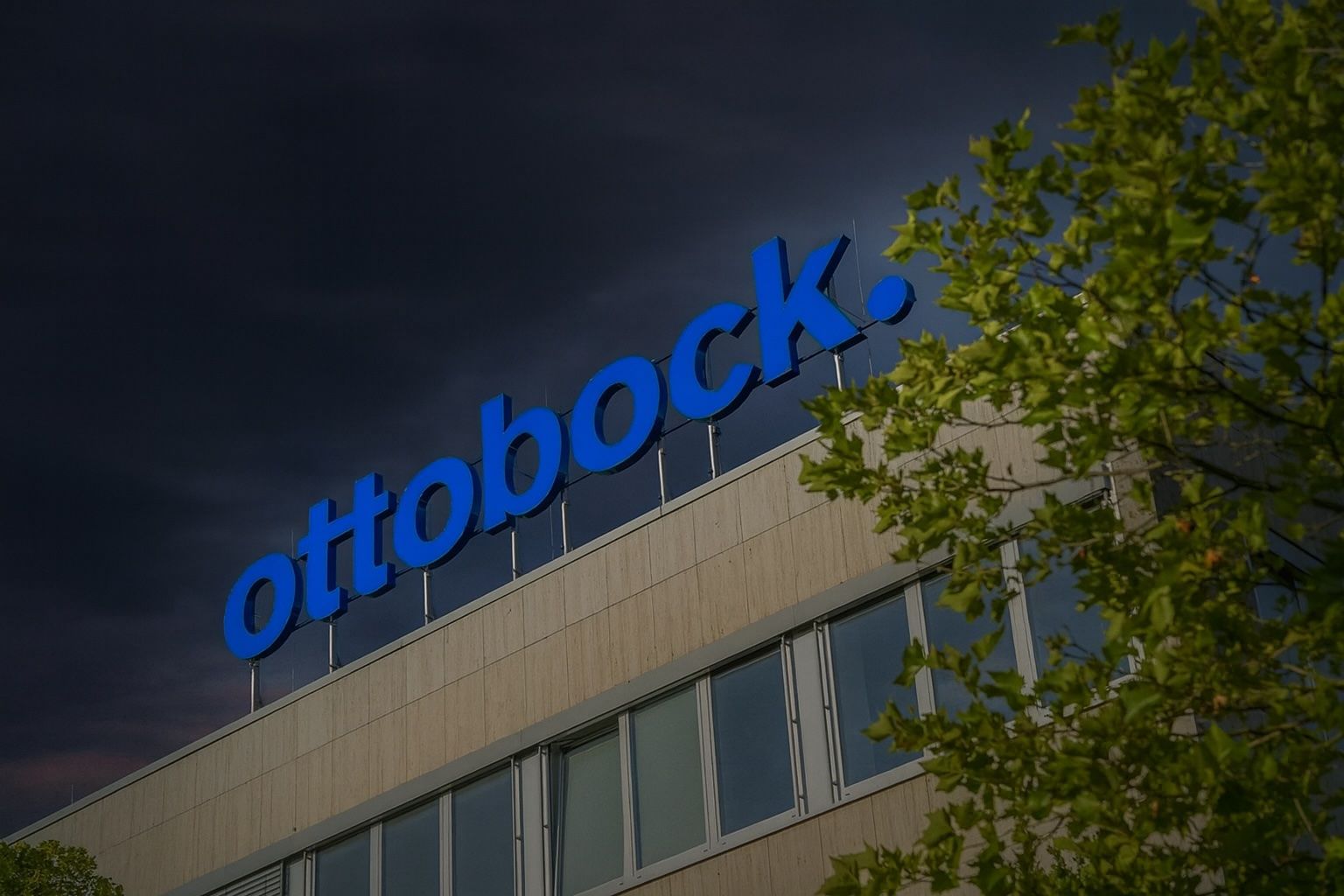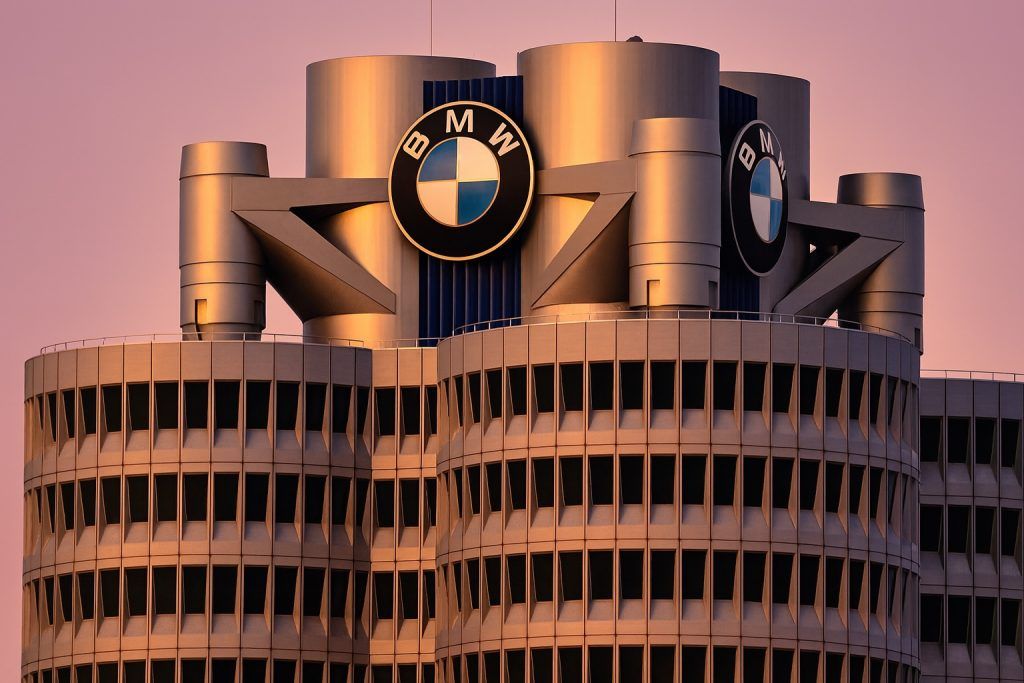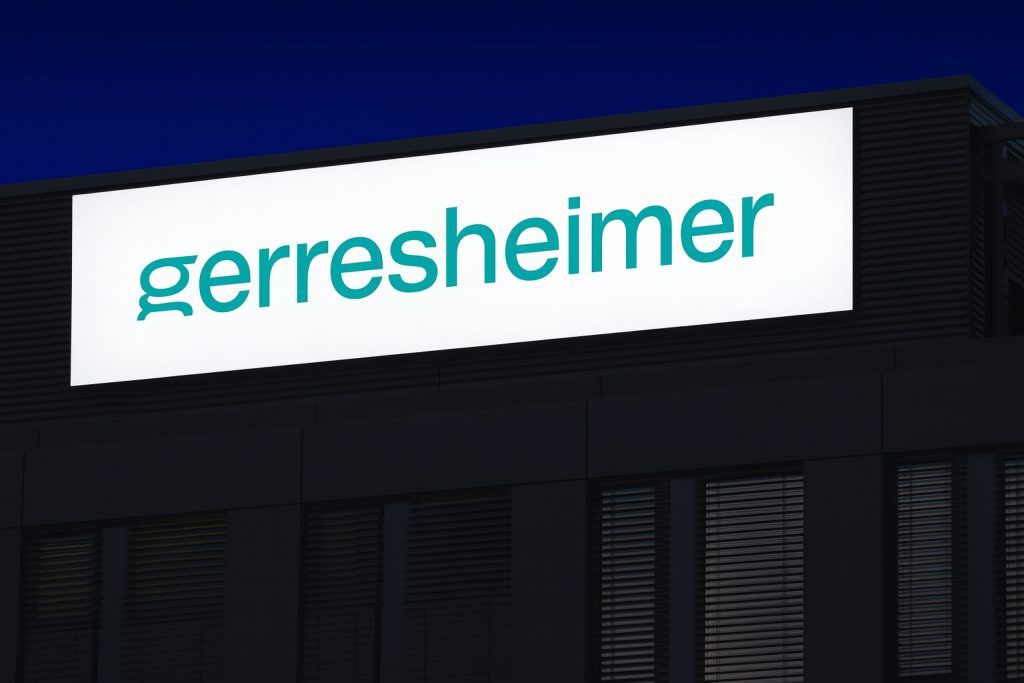- Soaring Debut: Shares of prosthetics maker Ottobock surged on their first trading day (Oct 9, 2025), opening at €72 – about 9% above the IPO offer price of €66 [1]. The stock even hit €73 intraday (≈11% above the offer price) amid strong investor demand.
- Biggest IPO of the Year: The IPO raised roughly €808 million, valuing Ottobock at €4.2billion [2]. It is Germany’s largest initial public offering in over a year [3], and the biggest since retailer Douglas’s listing in early 2024 [4].
- Family Retains Control: Ottobock will receive only €100 million of the proceeds for growth investments, while €700+ million goes to the founding Näder family, which is selling part of its stake [5]. After the IPO, the family still owns >80% of Ottobock’s shares [6], leaving a free float of about 19%.
- Reviving IPO Market: This blockbuster listing is seen as a milestone for Frankfurt’s market, signaling a revival after a drought in major IPOs [7] [8]. Bookrunners reported the offering was several times oversubscribed across the €62–66 price range, reflecting high investor interest. Recent weeks saw a rash of European listings (e.g. Swiss Marketplace Group in Zurich, Verisure in Stockholm), suggesting renewed appetitefor new issues [9].
- Ottobock at a Glance: Founded in 1919, Ottobock is a world leader in bionic prosthetics, orthotics, and exoskeletons [10]. Last year it generated €1.43 billion revenue with ~9,300 employees [11]. First-half 2025 results showed strong growth – sales climbed to €760–801 million and adjusted EBITDA to ~€175–180 million [12] [13]. CEO Oliver Jakobi hailed the IPO as a “milestone” for the 100+ year-old company, laying “the foundation to carry our tradition of innovation into the future” [14].
Ottobock’s Blockbuster Debut in Frankfurt
Ottobock’s IPO made headlines as the prosthetics manufacturer delivered a much-needed jolt to Germany’s capital market. Trading in Ottobock shares began on October 9, 2025, on the Frankfurt Stock Exchange’s Prime Standard segment. The stock’s first trade at €72.00 was significantly above the €66 per share offering price [15]. That opening price equated to about a +9% “pop” for IPO investors, underscoring the high demand for the shares. In fact, Ottobock’s debut is being celebrated as “the country’s largest IPO in over a year”, according to Reuters [16]. It’s a standout given the recent scarcity of large offerings in Frankfurt. The initial valuation of the company came in around €4.2 billion at the offer price [17], and the robust first-day trading suggests the market is confident in Ottobock’s prospects.
The share performance not only rewarded the company and its selling shareholders but also sent a positive signal to other firms considering listings. Traders noted that Ottobock’s stock traded as high as €73 (roughly +11% vs. IPO price) during the debut [18], before settling near the €72 level by midday. Such a solid start in a cautious market environment indicates investors were eager to get a piece of this medtech leader.
Financially, the IPO proceeded at the top end of the expected range (€62–66), which Ottobock and its underwriters had set prior [19] [20]. By pricing at €66 (the maximum), Ottobock secured the maximum intended proceeds – about €807–808 million in gross funds [21] [22]. Bookrunners (including BNP Paribas, Deutsche Bank, Goldman Sachs, and others [23]) indicated that investor orders greatly exceeded the shares available, with orders “multiple times” covering the offer range – a clear sign of robust demand in the order book. Before the debut, investors had already shown great interest in Ottobock’s shares, the German press noted [24]. This allowed the deal to price aggressively at €66, and still trade up in the aftermarket – a combination that bodes well for market sentiment.
Company Background: A Century of Prosthetics Innovation
Ottobock’s strong market reception is rooted in its status as a global leader in medical technology, particularly in prosthetic limbs. The company – full name Ottobock SE & Co. KGaA – was founded in 1919 by prosthetics pioneer Otto Bock. Over more than a century, it has built a reputation as the “world’s leading manufacturer of artificial limbs” [25], supplying advanced prostheses, orthotic braces, wheelchairs, and more to improve mobility for people with disabilities. Ottobock’s innovations (like its microprocessor-controlled prosthetic knees and bionic exoskeletons) have even been showcased in the Paralympics, underscoring its prominence in assistive technology [26].
Headquartered in Duderstadt, Germany, Ottobock operates worldwide and has grown into a sizeable enterprise. By 2024 it had about €1.43 billion in annual revenue [27], with operations spanning dozens of countries. Ottobock calls itself the “world market leader for prosthetics”, and its scale supports that claim – the firm serves a broad global customer base in healthcare. Prior to the IPO, Ottobock was entirely family-owned, chiefly by the Näder family(descendants of the founder). Hans-Georg Näder, the grandson of Otto Bock, has been the longtime owner-operator and driving force behind bringing the company to the public market [28].
Recent financial performance added momentum to the IPO. Ottobock reported strong growth in 2025, suggesting it is on an upswing. In the first half of 2025, sales jumped ~14–18% year-on-year (to around €760–801 million), and adjusted EBITDA surged ~30% to roughly €175–180 million [29] [30]. This improved profitability (helped by new product launches and acquisitions [31]) made a compelling case to investors that Ottobock can deliver growth despite global headwinds. The company’s narrative of blending “innovation and responsibility” over 100 years resonated with investors; CEO Oliver Jakobi proclaimed the stock listing as a “foundation to carry [Ottobock’s] tradition into the future”, with ambitions to continue setting industry benchmarks [32]. This mix of a storied legacy and modern growth story made Ottobock’s IPO especially attractive.
IPO Details: Structure, Stake Sales, and Use of Proceeds
Ottobock’s IPO was notable not only for its size but for its structure and purpose. The offering comprised ~12.2 million shares sold at €66 each [33] [34]. These shares represent approximately 19% of Ottobock’s total equity – meaning post-IPO the public free float is just under one-fifth of the company [35]. The rest remains in the hands of the Näder family. In fact, the majority of shares sold came directly from Näder Holding (the family’s investment vehicle) [36]. Ottobock itself issued a smaller portion of new shares, such that only €100 million of the €808 million proceeds goes to the company’s coffers for its own use [37]. The lion’s share of proceeds (over €700 million) flows to the Näder family, effectively allowing the family to monetize a slice of their holdings while retaining control [38].
This balance was by design. Hans-Georg Näder had long considered opening up Ottobock to outside capital – he even sold a 20% stake to private equity firm EQT back in 2017 as a prelude to a future IPO [39]. (EQT later sold that stake back to the family in 2022, so the Näders regained 100% ownership [40].) Now with the IPO, the family strategically sold a minority stake to public investors but kept over 80%, preserving controlling interest. For new shareholders, this means Ottobock remains a family-controlled company, which can be a double-edged sword: the Näders’ continued leadership provides stability and long-term vision, but the low free float may limit liquidity and index inclusion in the short term. Still, Ottobock chose to list on the Prime Standard segment in Frankfurt [41], meeting strict transparency rules and qualifying it for potential index membership (MDAX/TecDAX) once it has sufficient trading history. Analysts note that its market cap would place it among mid-cap companies, so Ottobock could join indices in the future if free float and liquidity criteria are met [42].
Ottobock has outlined clear plans for the €100 million in fresh funds it raised: primarily to finance strategic growth initiatives, such as acquisitions of complementary businesses and continued R&D investment [43]. In recent years, the medtech sector has seen consolidation, and Ottobock’s management hinted at using IPO proceeds to help fund further M&A to expand its product portfolio [44]. By contrast, the €700+ million that Näder Holding gains will likely be used to refinance debt and reward long-term family shareholders – German media noted one motive for the listing was to help pay down debt and restructure the family’s holdings, as well as partially cash out after decades of reinvestment in the firm [45]. Despite some external criticism of insiders selling large stakes (common in family IPOs), the outcome leaves Ottobock well-capitalized for growth while keeping the founding family’s interests closely aligned with the business going forward.
Notably, several big-name investors anchored the IPO as cornerstone buyers, boosting confidence. Hamburg-based billionaire Klaus-Michael Kühne (known for his logistics empire and large stakes in companies like DHL and Hapag-Lloyd) committed approximately €125 million to the offering [46]. Likewise, Capital Group, a major U.S. asset manager, agreed to take about €115 million worth of shares [47]. These commitments, totaling ~€240 million, were secured ahead of time, effectively covering nearly 30% of the IPO. Such cornerstone support sent a strong signal to the market and helped ensure the deal’s success. Ottobock’s books were well covered even before the formal bookbuilding closed, thanks in part to these early commitments and positive buzz about the company’s financial uptick [48].
Market Impact: Revival of Europe’s IPO Scene
Ottobock’s successful flotation is being viewed as a bellwether for the European IPO market, which has been sluggish for the past couple of years. Frankfurt’s IPO pipeline had nearly dried up following the volatility sparked by the pandemic and geopolitical tensions. In fact, Ottobock’s was the first Prime Standard listing in Frankfurt in 2025 [49] after multiple candidates postponed or canceled offerings. High-profile German IPO hopefuls like medical tech firm Brainlab, generic drugmaker Stada, and online auto parts seller Autodoc all scrapped their plans amid unfavorable market conditions in recent years [50] [51]. Ottobock itself is a second-time lucky story – it shelved a planned IPO in 2022 when Russia’s invasion of Ukraine roiled markets and dented investor appetite [52] [53]. That history made the 2025 debut all the more significant: it signals that the window for IPOs in Europe may be reopening.
Market watchers are citing Ottobock’s debut as evidence of improving sentiment for new listings. “Frankfurt’s IPO market is stirring back to life,” as one market analysis put it [54]. Indeed, since early autumn 2025, several sizable European companies have tested the waters. In Switzerland, SMG (Swiss Marketplace Group) went public in Zurich; in Stockholm, security firm Verisure floated at a hefty €13.7 billion valuation; and the London exchange hosted listings like U.S.-based Fermi Energy and Beauty Tech Group [55]. This flurry of activity in September–October 2025 has buoyed dealmakers after a long drought [56]. Ottobock’s €4.2 billion valuation and strong trading start rank it among the top IPOs of the year in Europe, restoring confidence that investors will embrace quality offerings. It’s telling that Ottobock was described as Germany’s largest IPO since March 2024(when Douglas re-listed) [57] – highlighting how rare big-ticket IPOs had become in the interim.
Crucially, market conditions have turned more favorable. Interest rates stabilized and equity indices are near highs, giving issuers and investors more confidence. The DAX index in Frankfurt is hovering around record levels in late 2025 [58], and volatility has been relatively low. Analysts see tech and healthcare stocks leading the market’s gains, creating a receptive environment for a med-tech champion like Ottobock [59]. According to Goldman Sachs, European equities could rise ~5% over the next year if economic stability continues, though much depends on managing inflation and geopolitical risks [60]. That cautiously optimistic outlook supports the case for more IPOs: when markets are up, investors are more willing to deploy capital in new offerings. Ottobock’s timing appears fortuitous in this sense, and its success “could pave the way for other German IPO candidates”, noted one market commentator in Handelsblatt. Already, banks report renewed inquiries from companies that had been waiting on the sidelines, encouraged by Ottobock’s upsized order book and post-IPO performance.
Expert Outlook: Prospects and Challenges Ahead
Looking forward, Ottobock faces both opportunities and challenges as a newly public company. On one hand, it operates in an attractive industry niche – the global prosthetics and orthopedic devices market – which is growing thanks to aging populations, improved healthcare access, and technological advancements (like bionic limbs). Ottobock’s position as a market leader with a strong brand gives it an edge to capture this growth. The infusion of capital (and public share currency) from the IPO can help fuel expansion. Management has signaled it will pursue strategic acquisitions and invest in innovation, aiming to extend Ottobock’s lead in high-tech prosthetic solutions [61]. If executed well, these moves could accelerate revenue growth and eventually move Ottobock into a higher tier of market capitalization – beneficial for both the company and its shareholders.
However, investors will be watching closely to see how Ottobock delivers on its promises. Now under the scrutiny of public markets, the company will need to maintain transparency and hit its financial targets to justify the lofty €4.2 billion valuation. Some analysts have pointed out that Ottobock’s IPO pricing was aggressive, at about 23–24 times trailing EBITDA, which assumes solid growth ahead [62] [63]. Any stumbles (e.g. slower sales or margin pressures) could weigh on the stock. Moreover, the limited free float (circa 19%) might lead to lower trading liquidity and higher volatility in the share price initially. It may also delay index inclusion; many institutional investors prefer companies in major indices for liquidity reasons. Ottobock will likely aim to gradually increase its free float over time – possibly via follow-on offerings or as the family dilutes – to improve trading volume and index eligibility.
Another consideration is corporate governance. With the Näder family still firmly in control (>80% ownership and presumably strong board influence), minority shareholders will rely on the family’s stewardship. The family’s track record is largely positive (guiding Ottobock’s growth for decades), but public investors typically hope for measures to protect their rights – such as independent board members or commitments to dividend policy. Investors will also monitor how Ottobock navigates any geopolitical or market risks. Notably, Ottobock has a global footprint, including sales in emerging markets and historically some business in Russia and Eastern Europe [64]. Geopolitical tensions or trade restrictions could impact those operations. Additionally, currency fluctuations (with a strong dollar or rising costs in supply chains) might affect profitability, although Ottobock’s broad geographic diversification provides some cushion.
That said, the overall sentiment from experts is optimistic. The IPO’s success itself is a vote of confidence. “The high interest in Ottobock’s stock shows that investors are willing to back solid, growing companies even in uncertain times,”said one Frankfurt-based analyst, adding that the deal’s outcome “may encourage other tech-oriented Mittelstand firms to list”. The Frankfurt exchange is certainly eager for more such listings – Deutsche Börse, which operates the exchange, has been highlighting Ottobock’s debut as evidence of a revitalized market [65]. As long as broader market conditions remain stable, Ottobock’s debut could indeed open the door for a pipeline of German IPOs in 2026.
In the near term, Ottobock’s stock will be closely tracked as a barometer. Many IPOs experience some volatility after the first-day excitement. Investment banks Goldman Sachs and Deutsche Bank (who led the underwriting) are reportedly prepared to support the stock via stabilization measures if needed, to smooth out excessive volatility in the first 30 days of trading [66]. This is a common practice and should help prevent any sharp post-IPO dips. Over the longer term, if Ottobock executes its growth strategy and meets investor expectations, its shares could see further appreciation. The medtech sector often enjoys premium valuations due to the societal importance and pricing power of innovative medical devices. Additionally, Ottobock’s mission-driven image – empowering people with mobility impairments – gives it an appealing ESG narrative that many institutional investors favor.
In summary, Ottobock’s IPO is being lauded as a win-win: the company gains capital and visibility, the founding family realizes some gains while retaining control, and the Frankfurt market gets a confidence boost. It marks a triumphant return of a German Mittelstand champion to the public arena. As Tagesschau (German national news) put it, this is “der größte Börsengang des Jahres” – the biggest stock market debut of the year – and it carries broader significance beyond just one company [67] [68]. If Ottobock’s public journey prospers, it could herald a renaissance for IPOs in the region, offering a roadmap for other family-owned tech leaders to follow. Investors and analysts alike will be watching Ottobock’s next steps closely, but for now, its blockbuster debut has clearly revived hopes in Europe’s equity markets [69] [70].
Sources: Ottobock IPO press release [71] [72]; Reuters and dpa news reports [73] [74] [75]; TS2 Tech analysis [76]; heise.de (German tech news) [77] [78]; Deutsche Börse media [79]; and company filings.
References
1. www.deutsche-boerse.com, 2. www.globalbankingandfinance.com, 3. www.globalbankingandfinance.com, 4. www.globalbankingandfinance.com, 5. www.globalbankingandfinance.com, 6. www.globalbankingandfinance.com, 7. ts2.tech, 8. www.globalbankingandfinance.com, 9. www.globalbankingandfinance.com, 10. www.deutsche-boerse.com, 11. www.deutsche-boerse.com, 12. www.reuters.com, 13. www.heise.de, 14. www.heise.de, 15. www.deutsche-boerse.com, 16. www.globalbankingandfinance.com, 17. www.globalbankingandfinance.com, 18. www.globalbankingandfinance.com, 19. www.reuters.com, 20. www.reuters.com, 21. www.reuters.com, 22. www.reuters.com, 23. www.deutsche-boerse.com, 24. www.finanzen.at, 25. www.reuters.com, 26. www.finanzen.at, 27. www.deutsche-boerse.com, 28. www.reuters.com, 29. www.reuters.com, 30. www.heise.de, 31. www.reuters.com, 32. www.heise.de, 33. www.heise.de, 34. www.heise.de, 35. www.heise.de, 36. www.heise.de, 37. www.globalbankingandfinance.com, 38. www.globalbankingandfinance.com, 39. www.reuters.com, 40. www.reuters.com, 41. www.heise.de, 42. www.heise.de, 43. www.heise.de, 44. www.heise.de, 45. www.zdfheute.de, 46. www.heise.de, 47. www.heise.de, 48. www.heise.de, 49. www.reuters.com, 50. www.reuters.com, 51. www.heise.de, 52. www.reuters.com, 53. www.globalbankingandfinance.com, 54. ts2.tech, 55. www.globalbankingandfinance.com, 56. www.globalbankingandfinance.com, 57. www.globalbankingandfinance.com, 58. www.marketscreener.com, 59. ts2.tech, 60. ts2.tech, 61. www.heise.de, 62. www.reuters.com, 63. www.heise.de, 64. www.zdfheute.de, 65. ts2.tech, 66. www.investing.com, 67. www.finanzen.at, 68. www.finanzen.at, 69. ts2.tech, 70. www.globalbankingandfinance.com, 71. www.deutsche-boerse.com, 72. www.deutsche-boerse.com, 73. www.globalbankingandfinance.com, 74. www.globalbankingandfinance.com, 75. www.heise.de, 76. ts2.tech, 77. www.heise.de, 78. www.heise.de, 79. www.deutsche-boerse.com







